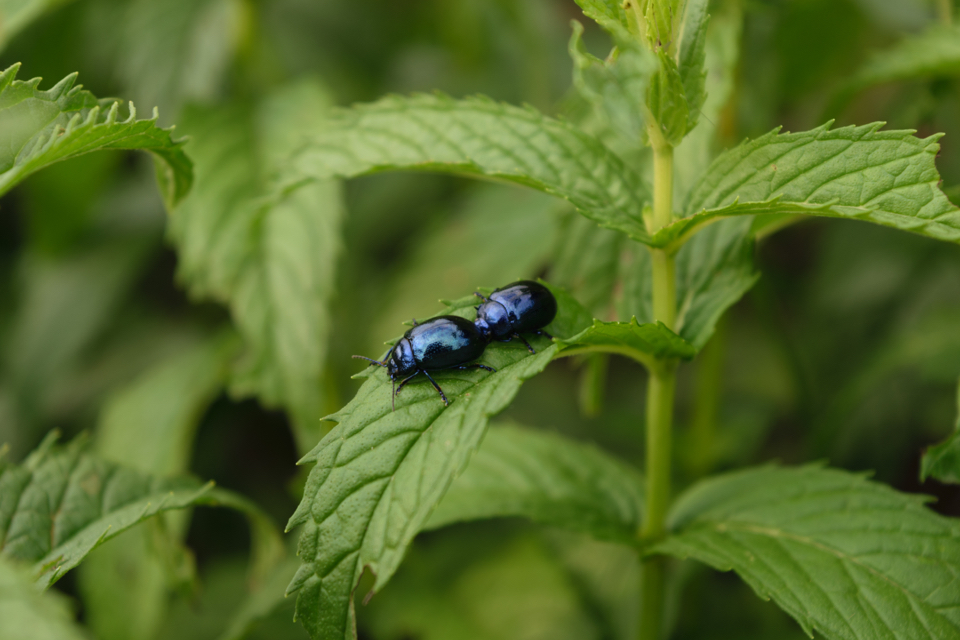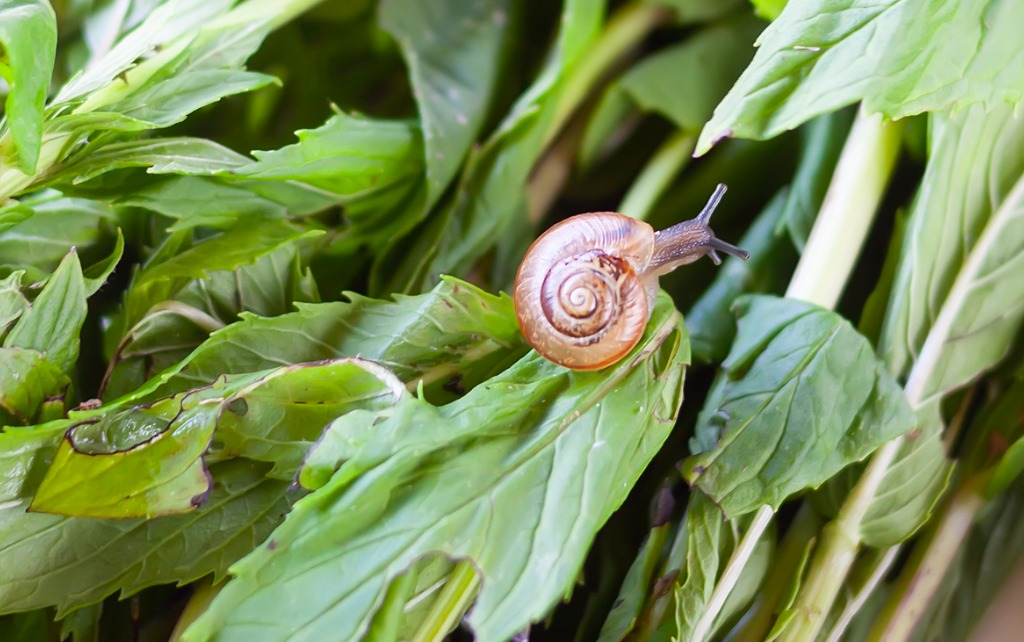Identifying Blue Mint Beetle: Are They A Problem And Do They Need Removing?


Elizabeth is a Permaculture Garden Designer, Sustainability Consultant and Professional Writer, working as an advocate for positive change. She graduated from the University of St. Andrews with an MA in English and Philosophy and obtained a Diploma in Applied Permaculture Design from the Permaculture Association.
Reviewed By COLIN SKELLY

Colin is a Horticulturist and Horticultural Consultant with experience in a range of practical and managerial roles across heritage, commercial and public horticulture. He holds the Royal Horticultural Society’s Master of Horticulture award and has a particular interest in horticultural ecology and naturalistic planting for habitat and climate resilience.
According to the RHS, the blue mint beetle was first found breeding in the UK in 2011 – but is this what is eating your mint, and if so, what should you do?1Blue mint beetle. (n.d.). Royal Horticultural Society. Retrieved March 9, 2023, from https://www.rhs.org.uk/biodiversity/blue-mint-beetle
These blue beetles are widespread in mainland Europe and have been spotted in several locations in South and East England and in parts of Southern Scotland.2Mint Leaf Beetle. (n.d.). Nature Spot. Retrieved March 9, 2023, from https://www.naturespot.org.uk/species/mint-leaf-beetle
They might spread elsewhere in the British Isles as our climate continues to alter.
“The Blue Mint Beetle is widely distributed in mainland Europe and, as with other plants and animals, its range is spreading northwards as the global climate heats, including into the UK,” says RHS Master of Horticulture Colin Skelly.3Salisbury, A., Halstead, A. J., & Malumphy, C. (2012, January 1). First record of blue mint beetle Chrysolina coerulans (Scriba, 1791) (Chrysomelidae) breeding in Britain. ResearchGate. https://www.researchgate.net/publication/280921405_First_record_of_blue_mint_beetle_Chrysolina_coerulans_Scriba_1791_Chrysomelidae_breeding_in_Britain
Spotting a glimmering dark blue beetle in your mint is honestly more likely to be interesting than alarming.
Though a pest, its threat to your plants is only minor.
What Is The Blue Mint Beetle?
The blue mint beetle is scientifically known as Chrysolina coerulans.
It is a species often found in damp meadows and riverside habitats.

Chrysolina coerulans are related to the British native Chrysolina herbacea, the green mint beetle.
As larvae and as adults, they feed on the foliage of Mentha species.
The green mint beetle is rarely an issue for gardeners as it more commonly feeds on wild mint species.
Identification
While the blue and green mint beetles are related, the two cannot usually be confused as adults.
As the common names suggest, the blue mint beetle has a dark blue hue, while the native green mint beetle is emerald green.

Adult blue mint beetles are 7mm long.4Blue mint beetle. (n.d.-b). Project Noah. Retrieved March 9, 2023, from https://www.projectnoah.org/spottings/673486003
Blue mint beetle larvae grow to around 1cm in length and they have black, soft, rotund bodies.
At this stage in their lifecycle, they are very similar to the larvae of the native green mint beetle.
What Else Might Be Eating Mint Leaves?
Mint is also eaten by several other pest species.
As well as providing food for green and blue mint beetles, mint leaves are also eaten by the caterpillars of several moth species in the Pyrausta genus.

You may see their silk threads loosely twined around the shoot tips and upper leaves.
Slugs and snails also can be found on mint leaves, though this is not usually a problem.
Is Blue Mint Beetle A Problem In The Garden?
Blue mint beetle is not really a problem in the garden.
While these and the green mint beetles will eat mint, mint is such a prolific and vigorous plant that their feeding will not usually pose any threat to the plants.
This species will probably not be able to fully decimate a mint crop, so their presence can usually be tolerated.
Both the larvae and the adult will feed on mints and tansies in the spring and summer months, creating small irregular holes in the leaves, but these will not be a major problem in most instances and there should still be plenty of mint for you to harvest if you have a reasonably well-established clump.

Mint is usually one of the more trouble-free plants in a garden.
In fact, in certain settings, it can become too successful, crowding out and out-competing other herbs or other plants grown close by.
Where mint is used as a ground cover plant – in a forest garden for example – its tendency to spread quickly and easily can be an advantage.
In such settings, you will likely be unconcerned about a beetle taking some nibbles here and there.

Where mint is grown in a garden bed or dedicated herb garden, it is often kept in check by placing it within a pot sunken in the ground.
Of course, you might also simply grow some mint in its own pot in a container garden.
In such settings, you may wish to remove pests like blue mint beetles which settle on your smaller plants.
Removing Blue Mint Beetle
It is usually perfectly possible to find and remove both the larvae and the adults by hand.

If you would rather not kill these beetles, then you might instead consider tolerating their presence and perhaps planting more mints to act as trap crops so you do not lose too much of your harvest.
Remember, blue beetles, like other beetles, are food for garden wildlife and though they are relative newcomers to our shores, their presence is not considered to be much of a problem.
References
- 1Blue mint beetle. (n.d.). Royal Horticultural Society. Retrieved March 9, 2023, from https://www.rhs.org.uk/biodiversity/blue-mint-beetle
- 2Mint Leaf Beetle. (n.d.). Nature Spot. Retrieved March 9, 2023, from https://www.naturespot.org.uk/species/mint-leaf-beetle
- 3Salisbury, A., Halstead, A. J., & Malumphy, C. (2012, January 1). First record of blue mint beetle Chrysolina coerulans (Scriba, 1791) (Chrysomelidae) breeding in Britain. ResearchGate. https://www.researchgate.net/publication/280921405_First_record_of_blue_mint_beetle_Chrysolina_coerulans_Scriba_1791_Chrysomelidae_breeding_in_Britain
- 4Blue mint beetle. (n.d.-b). Project Noah. Retrieved March 9, 2023, from https://www.projectnoah.org/spottings/673486003
